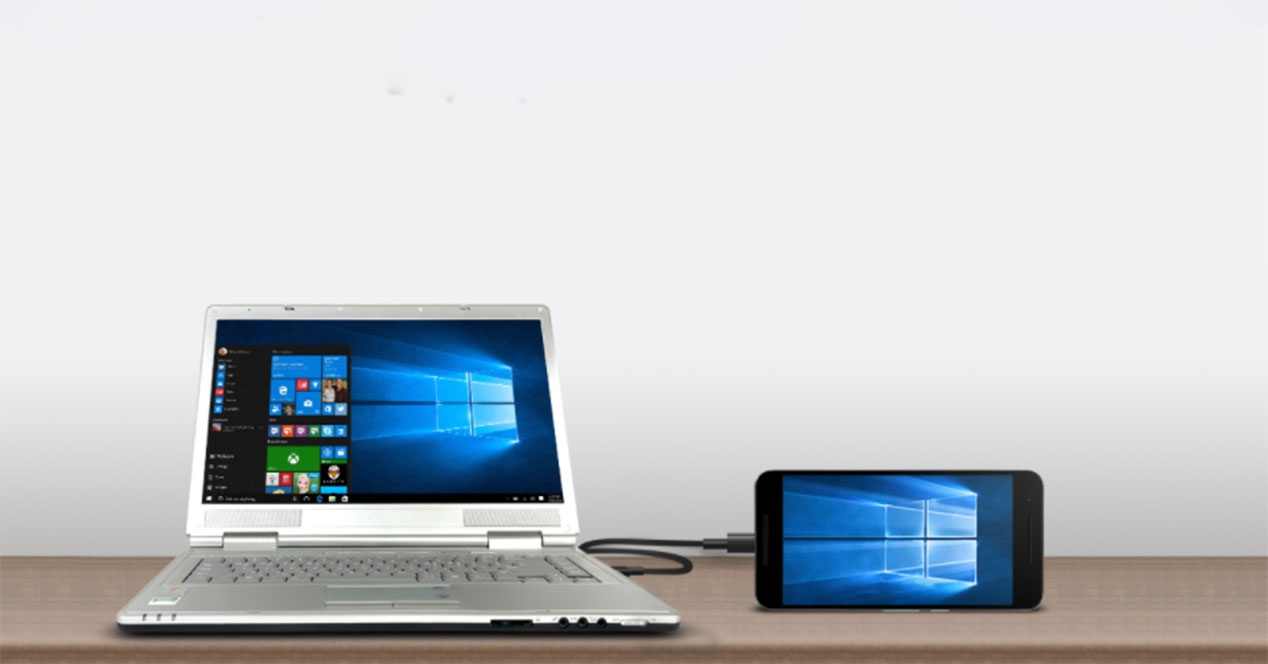

The use of a second (or even third) monitor is very common for different situations. It is often used a lot during work hours, especially in a telework environment; for streaming, as it allows content creators to chat, play games and manage a live stream on Twitch or YouTube; or simply for private and purely idle use.
As with applications to remotely control the PC from the mobile. In these cases, a wireless connection to the same Wi-Fi network of both devices is necessary, or failing that, a connection via a USB cable, more cumbersome but with less risk of lag. In the applications to use the mobile as a second screen, the same thing happens, needing one of the elements to be able to establish the connection, although in this case the Wi-Fi Direct is also a possibility.
In advance, for the mental well-being of readers, we have applications compatible with both Windows and devices that contain Mac. However, each application in this article must be read very carefully, since some of them are only compatible with the system of Microsoft, while others accept both operating systems. So for compatibility no problem.
In Linux it is somewhat more complicated, since there are very, very few options. Although it is an operating system widely used by computer scientists and programming specialists, for the day-to-day it is less demanded than Windows and Mac. There is also a technical reason, and that is that it is much more complex to launch the application on both devices with respect to to the other operating systems.
While in Windows or Linux a simple download of an executable file is enough, in Linux you have to insert commands. Moreover, it contains some problems with the window manager, since the virtual monitor occupies part of the area of the monitors. This causes that when wanting to move the cursor to the virtual monitor, the image on the physical monitors will also move. However, we have a couple of applications that can be used for Linux.
It is a client that will allow us to connect our Android with the Linux operating system, but that is not enough. Once this client has been downloaded, we have to install a program called Extend2VNC. To use Extend2VNC, select the appropriate resolution to display on your device, if it doesn’t appear then select Custom and specify it. Once this step is done, an IP address will appear to which we have to connect in Android with the VNC client.
It is one of the most popular in Android to expand the PC screen on the mobile, also one of the ones that offers greater compatibility between mobiles and computers. It is suitable for Android 4 and higher, being the only app that has versions of its client for Mac, for Windows and for Linux, an all in one. It is easy to use since it is enough to download the client for computers, activate USB debugging on the mobile from the developer settings and connect both devices with a USB cable.
Without further ado, we are going to propose all the apps that fulfill this function of expanding the computer screen on the small mobile display. There are not many, since there are few developers who have opted for this utility, although all of them are of unquestionable quality. Taking into account the app Splashtop, which also works for this section, these are the other alternatives that we can try.
With it you can connect the mobile to the computer or use the phone as a second screen, both to duplicate it and to add continuity to the PC or Mac panel. It is compatible with Windows (10) and Mac (Mojave and higher), it works reasonably well, Allows you to use the Android touch screen and its use is very simple.
A third option that has a difference: Spacedesk not compatible with Mac computers. In this case, yes, the tool only supports Windows 8.1 and Windows 10, so that it will not be possible to use SpaceDesk to extend the screen of a Mac. The app enables by default the connection using WiFi, so there is a certain risk of lag in operations (it is recommended to use USB tethering, WiFi Direct or a network cable). It is a very good application, although somewhat more unstable than the previous ones.
Another app that can try for free before deciding whether or not it is worth paying for the tool. This tool stands out for offer high performance and features like touch pressure detection on Windows 10 computers. This means that our Android tablet or mobile can be used as a graphics or drawing tablet by staying connected to the computer.
Allows you to connect your Android phone to the PC with a simple USB cable. All that is required is the download of the mobile application on the device and the installation of the software on the PC. An app that works for computers with Windows XP to Windows 10 and Server 2012. It serves both to remotely control the PC from the smartphone, and to use the mobile as a second screen on the computer.
Exploring the Top 5 Voice AI Alternatives: What Sets Them Apart?
How iGaming Platforms Ensure Seamless Integration of Casino Games and Sports Betting?
The Rise of Spatial Computing: Evolution of Human-Computer Interaction
Data Loss on Windows? Here's How Windows Recovery Software Can Help
Integrating Widgets Seamlessly: Tips for Smooth Implementation and Functionality